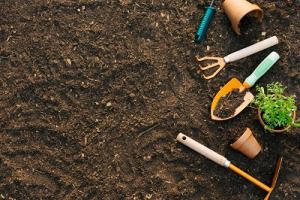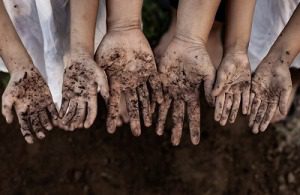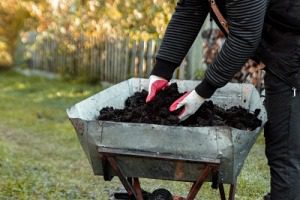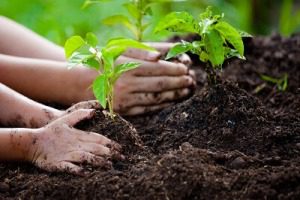Earth day is right around the corner. One of the best ways to celebrate with your kids is to get them involved in an activity that will help the environment not just during the holiday, but well past earth day. So, let’s learn how to start composting!
Earth day projects don’t have to be complicated to be beneficial. With a couple of food scraps and a dash of soil, your family will be on their way to having a greener household. Below, we’ll detail how to start composting at home.
How to Start Composting: What You Need
All of these supplies listed in the article can also be found at Home Depot! Check them out for all your home needs.

To create a proper compost, you’re going to need a mixture of biodegradable food scraps and soil. Here are a couple of foods/household items that are compost friendly:
- Crushed eggshells
- Coffee grounds
- Plant and flower clippings
- Fruit scraps
- Straw
- Shredded newspaper
- Vegetable scraps
- Cardboard
- Tea Leaves
In addition, you also might want to consider picking up a compost bin or outdoor mixer for convenience.
How to Start a Compost Pile: Items to Avoid

Compost-friendly scraps are essential to healthy soil, here are a couple of foods/items that shouldn’t be composted.
- Meat of any kind, bones
- Banana peels and orange rinds that may contain pesticides
- Pet manure
- Onions and garlic
- Dairy products
How to Compost
Now that you have your needed materials, here is a step-by-step guide for how to start composting.
1. Find an Appropriate Compost Spot

If possible, find a patch of bare earth to begin your compost. A flat, outdoor area will do if this isn’t available. Another option is an outdoor receptacle that can sit on your deck or another part of the yard. You can use an indoor bin to keep under your kitchen sink or on the counter with the intention to add the scraps to the larger outdoor bin.
2. Lay Down Straw or Twigs

For proper drainage, lay down straw or twigs as the base of your pile.
3. Add in Compost

This is the fun part! Composting is one of the best earth day projects for kids since they’ll love getting their hands dirty during this process. Try to alternate layers of wet items with dry items— i.e a layer of fruit scraps followed by a layer of shredded newspaper, etc.
4. Add Manure
To have super-efficient compost, you’ll want to add grass/plant clippings, wheatgrass, etc. to your compost as green manure. In addition, you can also add fortified compost starters as an alternative.
5. Water Your Compost

One of the most neglected aspects of learning how to start composting is forgetting to water the compost pile. So, water your compost occasionally, or if you live in a humid/rainy climate, the weather should be enough on its own.
6. Cover
If possible, cover your compost pile with whatever is available. Wood or a plastic sheet will do, the main idea is to make sure that the pile is somewhat covered so that it can create its own moisture. Moreover, covering also protects your compost pile from becoming overwatered by the rain. Some compost bins are built-in with covers to speed up the process.
7. Turn

One of the most important parts of learning how to start composting is committing to turn the pile every few weeks. This gives the compost pile needed oxygen to help break down its contents. You can do this with a shovel, or get a bin that has built-in turning handles or features. Moreover, you can get your kids involved and add it to their weekly chores list so that they’ll develop a sense of responsibility for the garden.
8. Enjoy Your Compost!

After a while, you’ll begin to see your compost fully biodegrade into nutrient-rich soil. This soil, coined “garden gold” can be a great natural fertilizer for your plants. Compost can also build the foundation for a super healthy garden by reducing harmful pests. Moreover, learning how to compost teaches your family the value of reducing food waste.
Enjoy Learning How to Start Compost Together!
Overall, learning how to compost is a great way to be earth-conscious as a family. Your kids are sure to love getting their hands dirty in celebration of earth day.